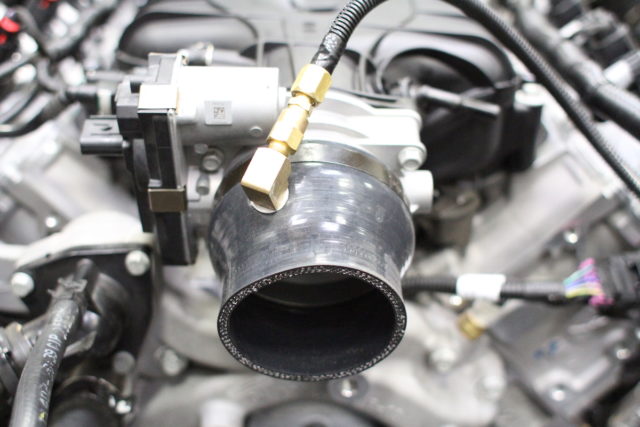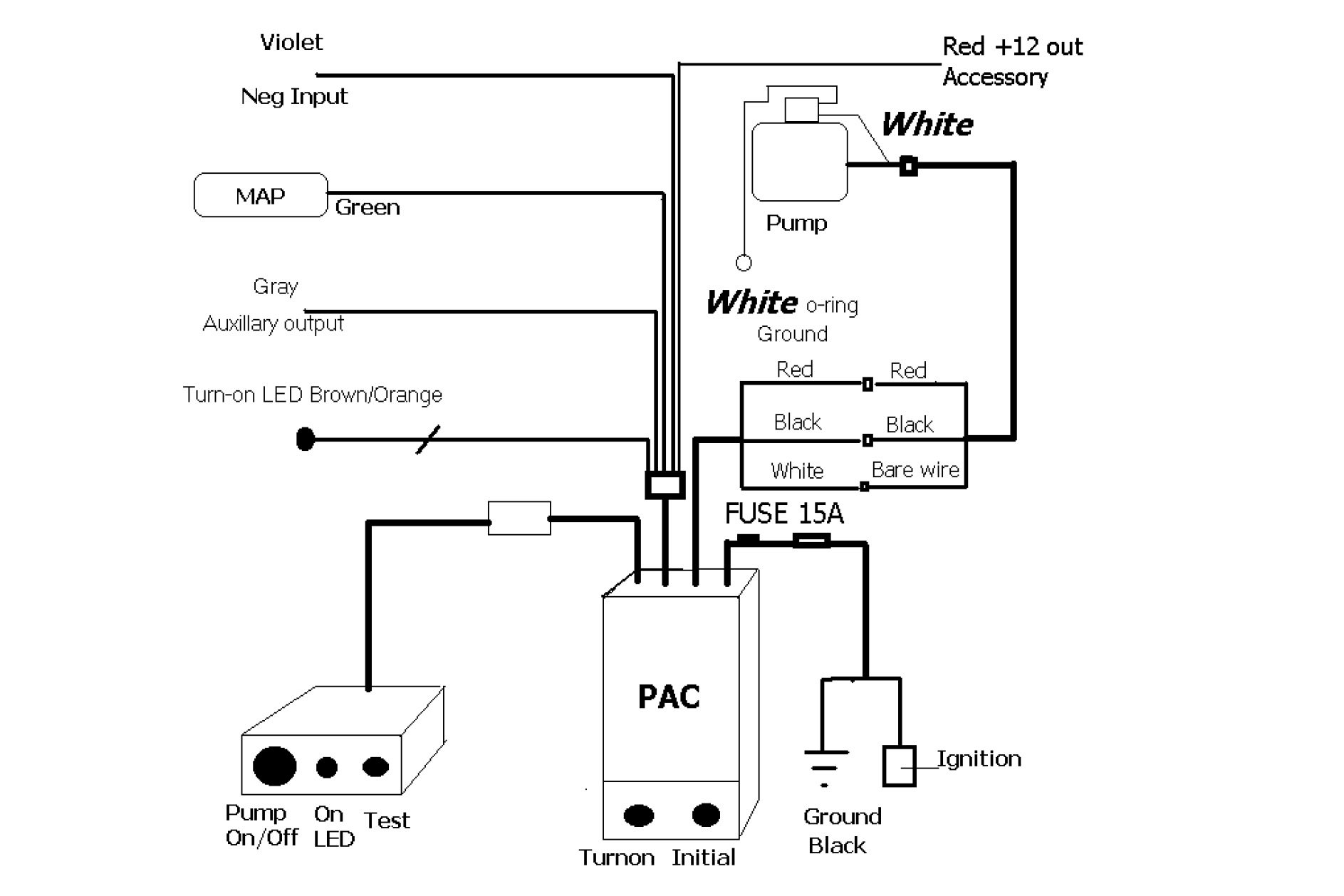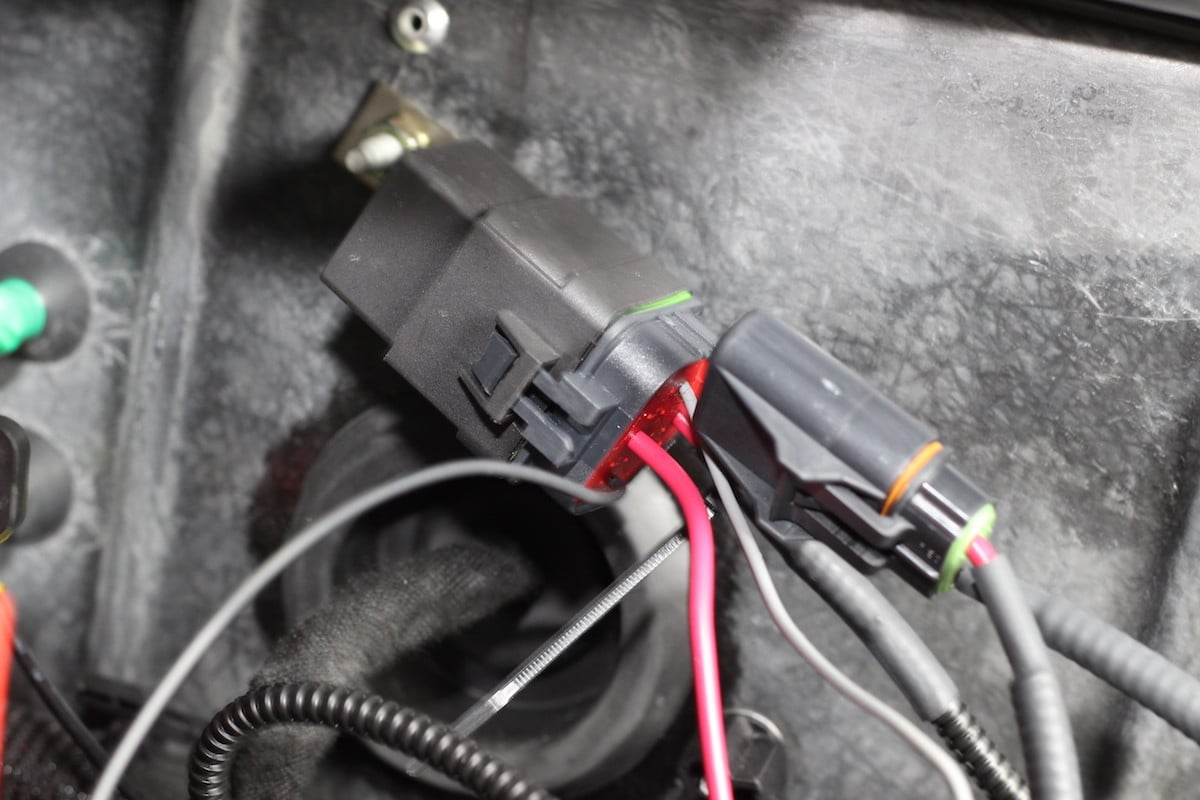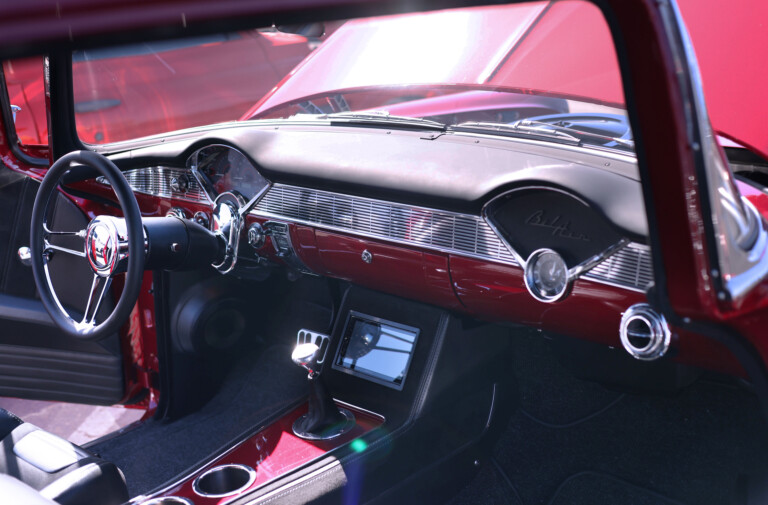 Suck, squish, bang, blow – these are the basic principles of every internal combustion engine in existence. But as you begin to make more grunt, especially with a power adder, everything gets hotter. It’s the sucking that needs to get more efficient (stay with us now) in order for the squish, bang, and blow to create a higher level of satisfaction. With help from AlkyControl we were going to get our hot air under control on our Project C700.
Suck, squish, bang, blow – these are the basic principles of every internal combustion engine in existence. But as you begin to make more grunt, especially with a power adder, everything gets hotter. It’s the sucking that needs to get more efficient (stay with us now) in order for the squish, bang, and blow to create a higher level of satisfaction. With help from AlkyControl we were going to get our hot air under control on our Project C700.
Don’t get us wrong, the front mount intercooler on our ProCharged C7 works just fine. Getting the temperature even cooler allows the engine to produce more power. Not only does the increased air density fill the cylinders with more oxygen, cooler air is less prone to knocking. Chevy’s new LT-series of engines are a little sensitive when it comes to knock control.
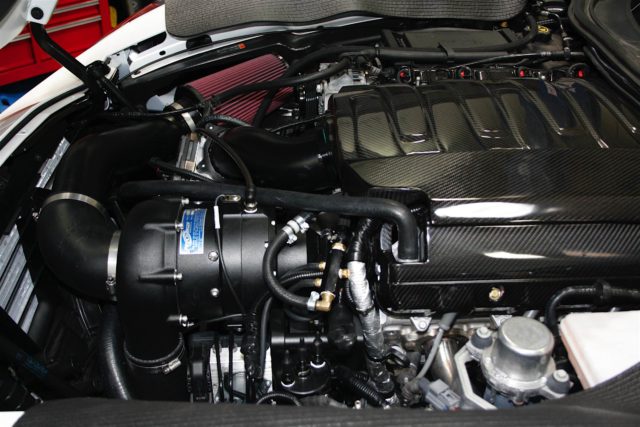
Our ProCharged Project C700 Corvette has a goal of making 700 horsepower at the crank. We were going to help get it there with an AlkyControl water/meth kit.
Power adders are always fun but not all vehicles have enough space for an intercooler. Making a lot of boost on a non-intercooled engine is a dangerous game to play with your tune up. Same goes for an intercooler that’s eclipsing its efficiency range.
On the other side of the equation are direct-injected engines that are primarily fueled by an engine driven, mechanical pump. There’s currently no affordable solution for a larger mechanical pump for the C7, and changing the injectors or lobes can only do so much.
Vehicle Specific Kits
AlkyControl offers an array of vehicle specific applications and the system is refreshingly simple. A reservoir contains a mix of water and methanol (which we will get to later), a fluid pump delivers the fluid to a nozzle that is placed in the air stream. An electronic device that uses manifold pressure or MAF voltage as a reference triggers the pump to pulse. The starting point creates a linear increase in the pump’s duty cycle.
So let’s break this all down…
Makin’ the Mix
When it comes to the ratio of water and methanol, Julio Don of AlkyControl explains, “Depends on goals. The vehicle you’re putting a kit on [our C7] has an issue with fueling as it’s direct injected. Using 50/50 will not add as much fuel as 100 percent methanol can. If intake air temperatures are high enough, or a customer simply wants to spray for ‘insurance,’ 50/50 can be used. So if there is plenty of room in the fuel system, the customer is happy with existing power levels, then 50/50 is fine. On a side note, on applications with a positive displacement blower that changes to 100 percent due to the issue with water and rotors.”
Just like anything in life, the higher concentration of alcohol the more attention needs to be spent on the system. Don elaborates by saying, “Depending on fluid used, stay on top of testing and maintaining the system. The higher the concentration of methanol used, the more frequent the pump will need to be serviced.
“The life of the pump is 15+ years on straight water, five to seven years on 50/50, and two to three years on straight methanol. Pumps are inexpensive in the grand scheme of things, and are simple to send in for service or replace.”
But Where Do I Spray?
But where do you put the nozzle? On centrifugal supercharger and turbo applications there’s the possibility of feeding the compressor housing with the mix first. “On the Corvette, there is a MAF sensor in the charge pipe,” explains Don. “Spraying pre-compressor will wet this sensor and damage it. On applications that don’t use a MAF, and you want to move the compressor map due to the increased density of the air because of fluid being shot in, then it’s a great way to make a smaller compressor appear larger.
One other negative is the possibility of blade erosion if the liquid is not atomized.” But how far back from the throttle body does it need to be? Don says, “The air speed through the charge pipe will exceed 150 mph so a few inches makes no difference.” On C700 we chose to mount the nozzle in the silicone coupler just before the throttle body, so as to have no ill effect on the MAF sensor. This is one of the most common locations.
Getting the ECM to See the Difference
The regular C7 has the air intake temperature sensor built into the MAF. Since you can’t spray through a MAF sensor without causing unfavorable results, there’s no real way to measure the temperature drop of the air in stock configuration. When space is available, it can be “broken out” of the MAF sensor and placed after the nozzles. What that means is de-pinning the intake temperature wires from the MAF and running an external sensor with the same temperature scale into the manifold or charge pipe. This allows the tuner to manipulate timing tables to better optimize the effects of the water/meth.
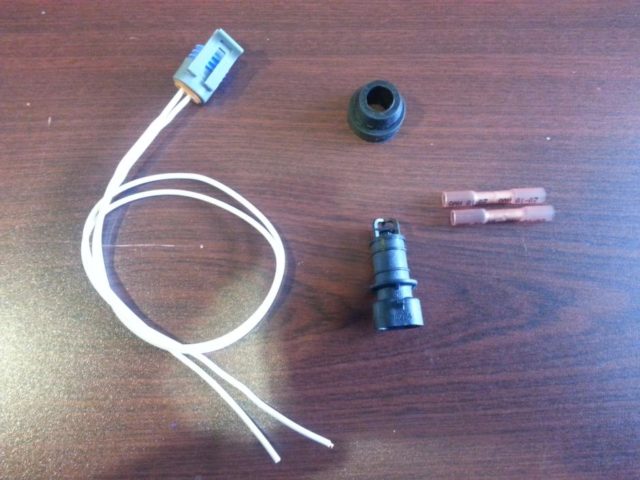
AlkyControl offers a “break out” kit that separates the air intake temperature sensor from the MAF so the ECM can see a temperature reduction from the water/meth mix.
On a side note Don also explains that one of their advantages is their customer service, “Our company has taken a very ‘hands on’ approach with the building of these kits. The pumps are individually gone through, parts are added to increase their reliability and eliminate issues that can arise.
“We use braided stainless steel [lines] with AN fittings versus plastic lines with pushing termination. Use of weather pack and protected connectors to keep corrosion from entering into those parts. Circuit boards and parts are assembled here in the US. There is constant moving to keep the systems moving forward in reliability. We also add a feature of a pressure sensing circuit to let the user know system has pressure.”
Installation
AlkyControl provides a very detailed overview with pictures in their installation instructions so we will just provide the highlights.
The kit includes a nifty reservoir that’s specifically designed for the C7 and mounts right next to the windshield water reservoir. The pump is mounted right next to the tank and is attached via a pre-made line. The pump’s cable is ran inside the car via a grommet in the driver’s side kick panel.
The pressure side of the fluid pump also contains an inline filter to keep the nozzle from clogging. As we showed in the photo above, the final side of the line is ran to the nozzle that’s mounted in the charge pipe.
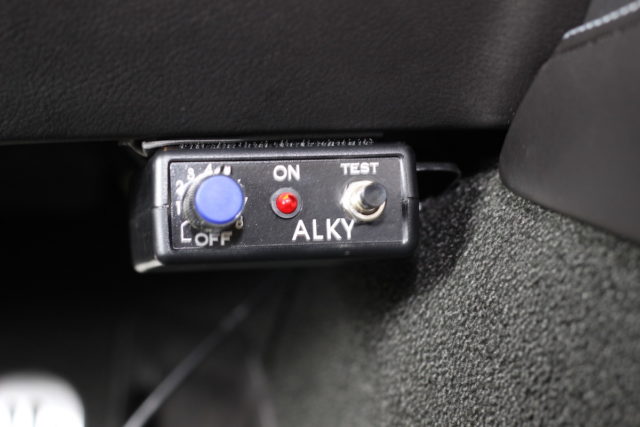
The test button on the controller allows for easy validation of the wiring and to check for leaks. Make sure the vehicle is off and the nozzle is removed from the charge pipe before doing so.
The wiring is fairly straightforward. The control module uses the MAP (or MAF) as a reference voltage to trigger the pump to turn on, depending on the set-point of the knob.
On the Rollers
With the kit installed, it was time to get our C7 over to local tuner Ryne Cunningham of Cunningham Motorsports so we can take advantage of the water/meth kit through a more aggressive tune-up.
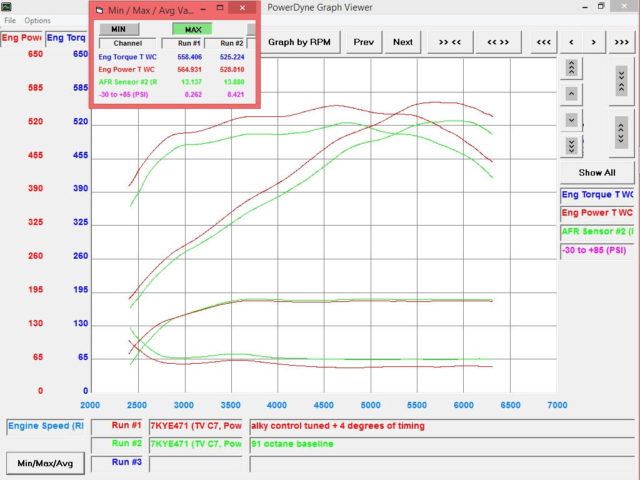
On Cunningham’s Mustang dyno a baseline number of 528.8 horsepower and 525.2 lb-ft of torque was achieved through 91 octane pump gas. The AlkyControl system allowed Cunningham to add four degrees of timing to the tune-up, netting a very respectable gain of 36.1 horsepower and 33.2 lb-ft of torque.
As we mentioned previously, while Chevy’s new LT-series engines pack a potent punch, they are also known to being knock sensitive. We knew that if we could keep the knocking at bay, the possibility of big power gains were going to be very real.
On Cunningham’s Mustang dyno a baseline number of 528.8 horsepower and 525.2 lb-ft of torque was achieved using 91 octane pump gas. The AlkyControl system allowed Cunningham to add four degrees of timing to the tuneup, netting a very respectable gain of 36.1 horsepower and 33.2 lb-ft of torque. This bumped our total output to 564.9 horsepower and 558.4 lb-ft of torque. Another added benefit of the water/meth injection was our increased fueling that will help us get closer to our 700 horsepower goal for Project C700!




